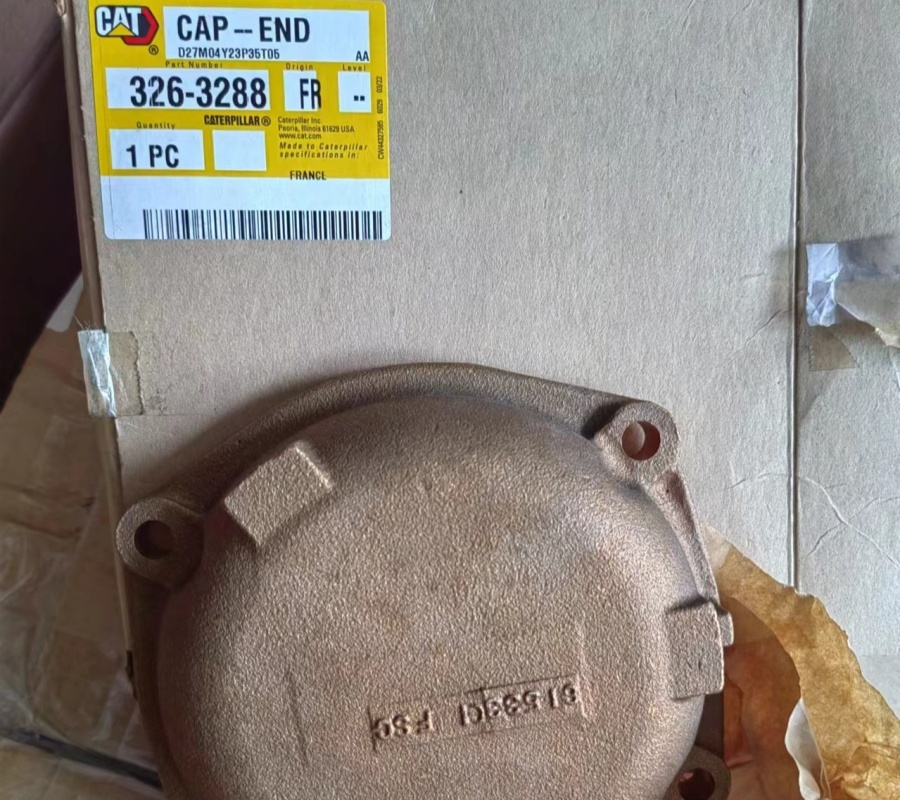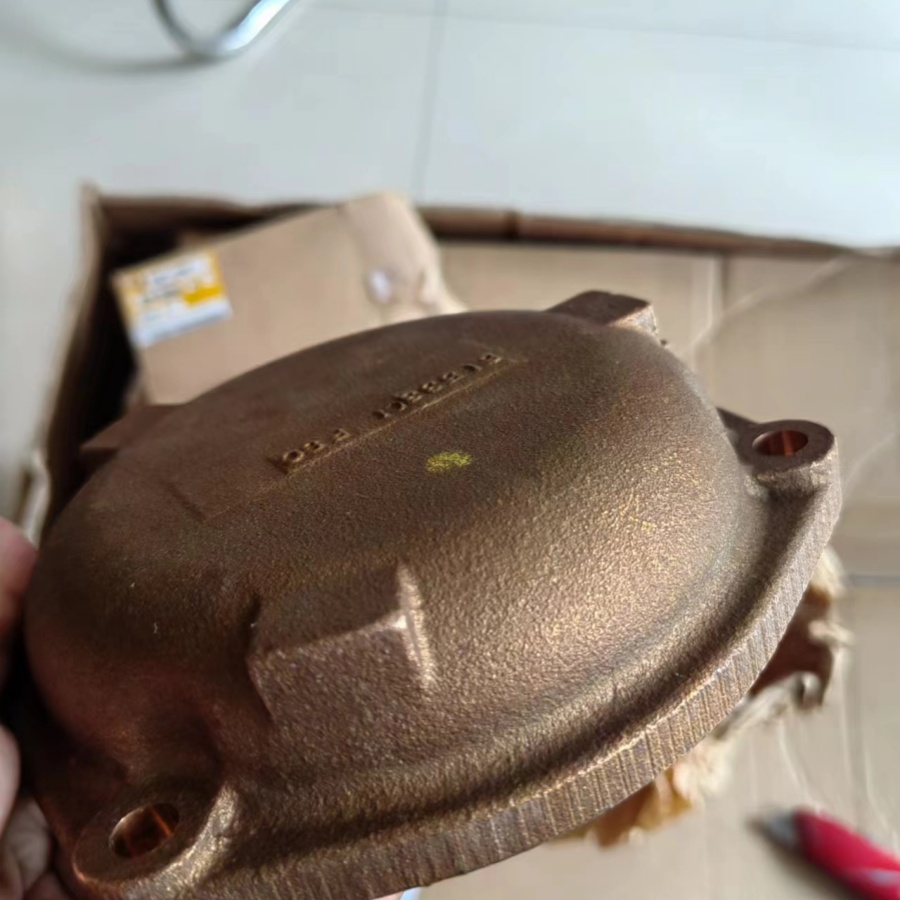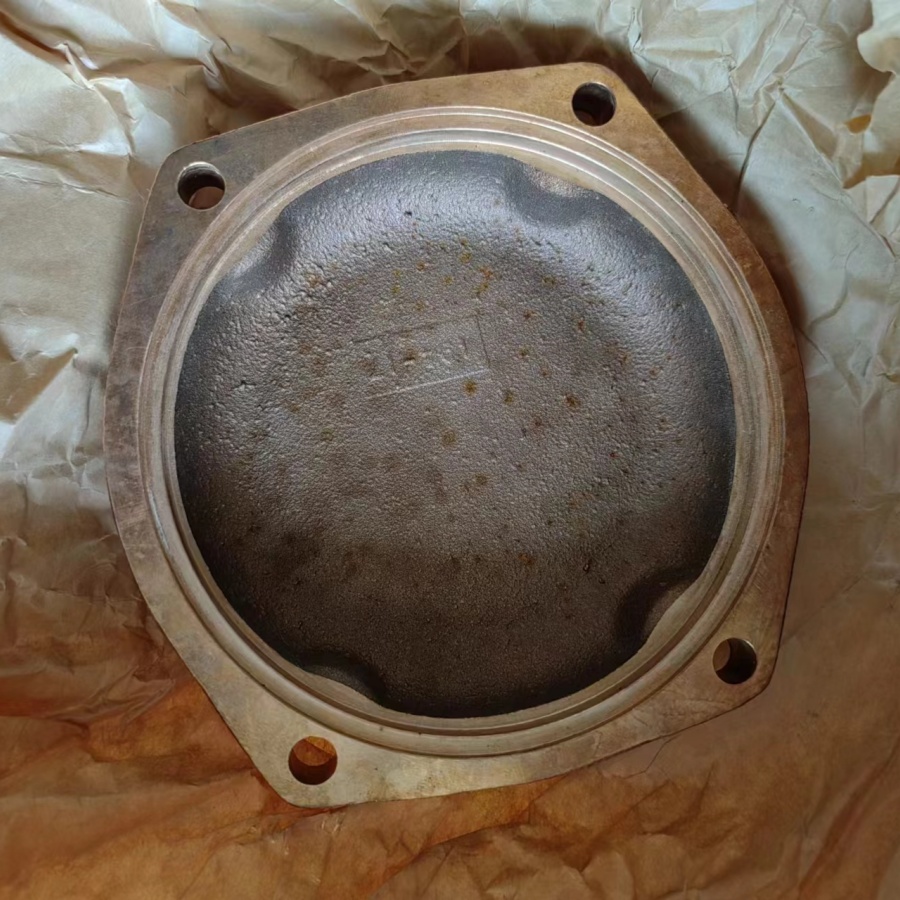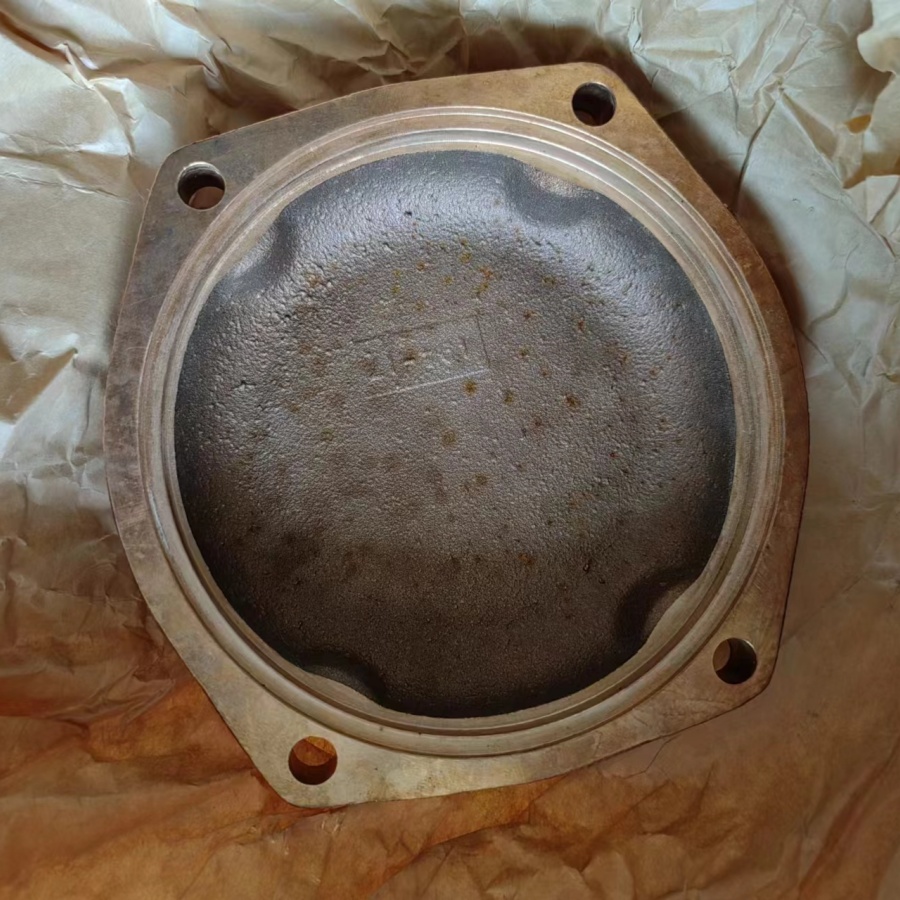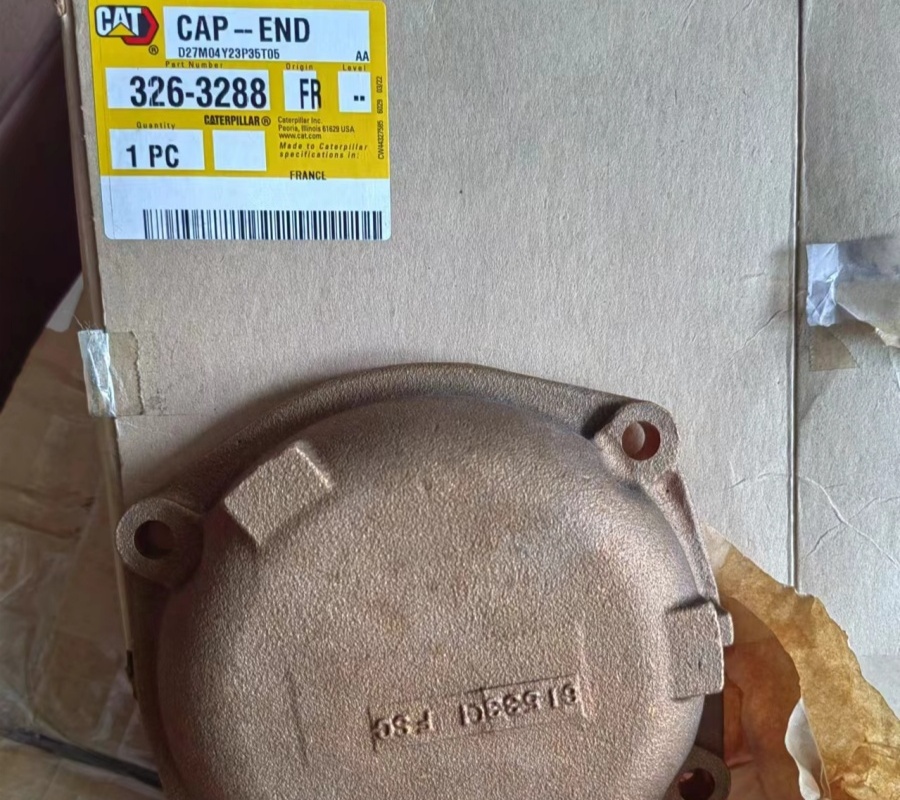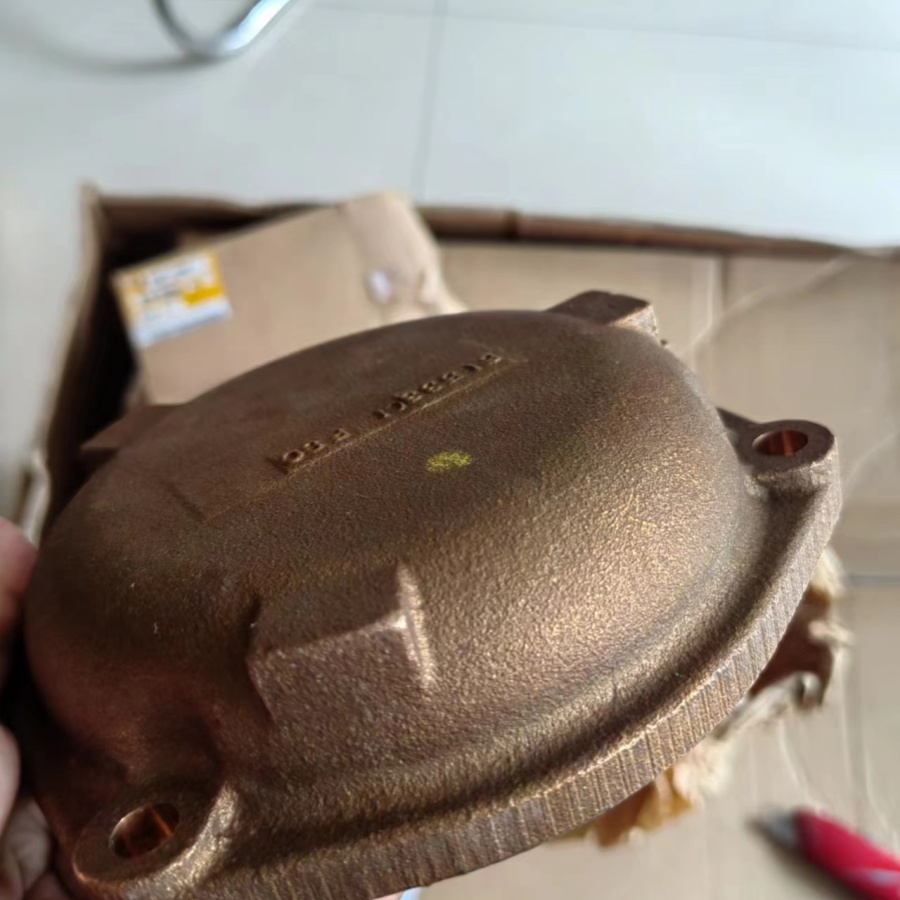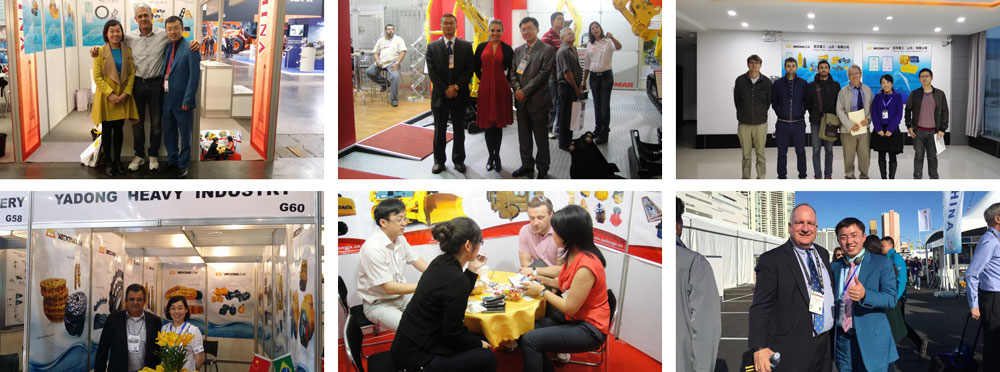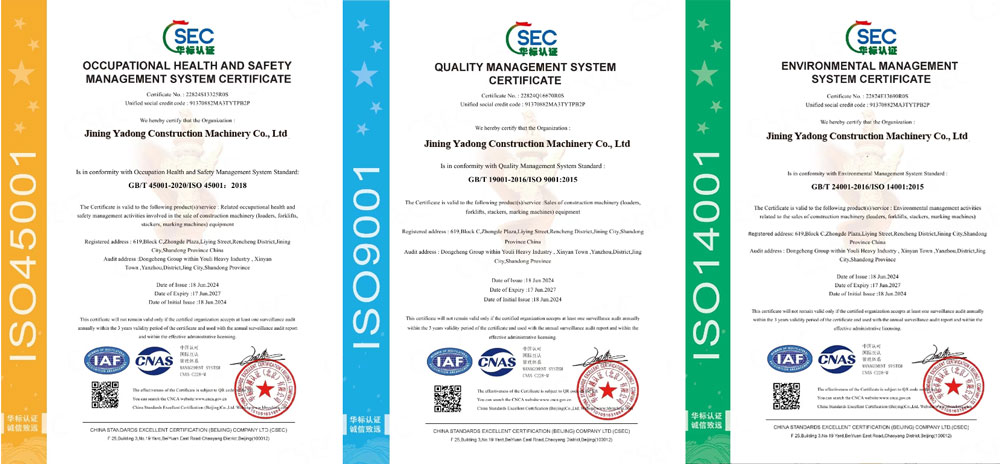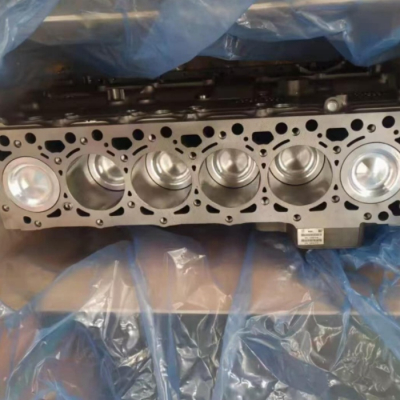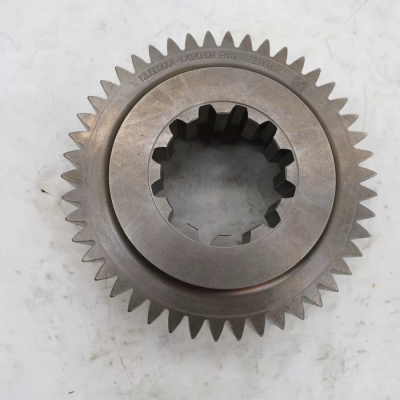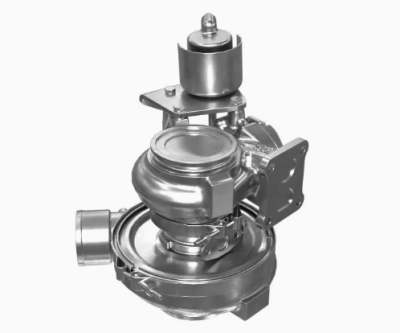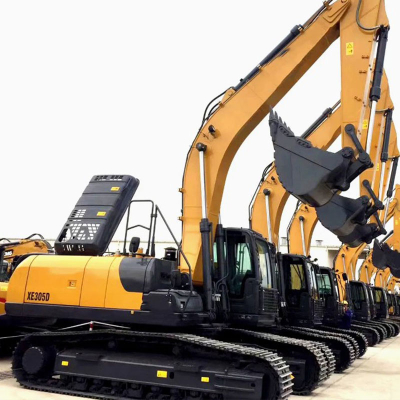Caterpillar 326-3288 Coven-Coven Original
1 、 accurate compatibility : specially designed for the corresponding Caterpillar models, is ideally compatible with other equipment components. This provides ease of installation and reliable operation in the system.
2 、 High strength and durability : is made of durable material, which withstands strong mechanical loads and external influences. This guarantees a long service life and rare breakdowns.
3 、 Effective protection : provides reliable protection of the internal components of the equipment from dust, moisture and other pollutants. This helps to extend the life of the main parts and improve the work of the entire system.
Product representation
Detailed product information
Design: A compact and effective design consisting of many components is usually used, including heat exchangers, shells, end plates, etc. Heat exchanger tubes are usually made of corrosion-resistant metal materials, such as copper, aluminum or stainless steel, which provides reliability and durability in various working environments.
The principle of operation: based on the principles of thermal conductivity and convection, the temperature difference between the engine cooling liquid or other medium and the outer air or other medium is used to achieve heat transfer and exchange, thereby reaching the cooling purpose or heating of the engine components to guarantee the engine operation in the corresponding temperature range .
Type: The most common include the heat exchanger of the intermediate cooler, the heat exchanger with the water cooling of the cylinder shirt, etc. The heat exchanger of the intermediate cooler is used to cool high -temperature air after turbocharged, increase the density of the inlet and increase the output power of the engine; The water exchanger of the cylinder sleeve is mainly used to cool the sleeve of the engine cylinder and the removal of a large amount of heat released during the combustion of the fuel in the engine.
Productivity parameters: various models of Carter heat exchangers have different performance parameters, such as heat exchange area, heat dissipation, working pressure, consumption, etc. The heat exchange area determines the efficiency of heat transfer. In general, the larger the heat transfer area, the better the scattering of heat or the heating effect; Work pressure and consumption comply with the requirements of the engine cooling system or other related systems.
Stages of installation
Preparation for installation
Check the components: check if the heat exchanger is damaged or deformed, whether all interfaces are whole, and also make sure that all the installed seals, gaskets and other accessories are in order.
Cleaning: Clean the installation site of the heat exchanger and the surrounding areas from dust, oil and garbage to prevent them from entering the system during installation.
Prepare tools: Prepare the necessary tools such as wrenches, screwdrivers, dynamometric keys, sealants, etc.
Installation process
Accommodation and fixation: accurately place the heat exchanger in a given installation site and use bolts or other fasteners to securely fix it on the engine or the corresponding bracket. Pay attention to the tightening of the bolts in accordance with the indicated puffing moment to ensure a reliable installation of the heat exchanger.
Connecting pipes: connect the appropriate coolant pipes, air pipelines or other pipes in accordance with the type of heat exchanger and the requirements of the system. When connecting, make sure that the joints of the pipes are combined, use the appropriate seals and gaskets to prevent leaks and tighten the bolts of pipe connections in accordance with the indicated puffing moment.
Electric connection: if the heat exchanger is equipped with electric components, such as temperature sensors and fan motors, correctly connect the corresponding wires and connectors to provide reliable electrical connections and avoid short circuits or cliffs of circuits.
Checking after installation
Checking check: Before starting the engine, check the tightness of the heat exchanger and its connecting pipes. This can be done by testing under pressure or by observing the leakage of the liquid.
Checking the components: Check if the heat exchanger is reliably installed, whether the pipes are correctly made and whether the electrical connections are working.
Checking the fluid level: check the level of the engine coolant or other liquids associated with it to make sure that the fluid level is within normal limits.
Common errors
Drenches: leaks can occur in pipes, compounds, seals and other parts of the heat exchanger, which will lead to a loss of coolant or other environments. The reasons may be aging or damage to the seal, corrosion or pipe rupture, as well as insufficient tightening of the bolts during installation.
Clogging: pipes or channels inside the heat exchanger can be clogged with a drop, rust, impurities, etc., which can affect the efficiency of heat transfer, lead to an too high engine temperature or other related problems.
Poor dissipation of heat: this may be associated with pollution of the surface of the heat exchanger, which affects heat transfer; Or with a fan malfunction, which is why the cooling air does not circulate evenly, which leads to ineffective heat dispersion.
Damage to the components: the components of the heat exchanger, such as heat exchange tubes, end plates, fan engines, etc., can be damaged due to prolonged use, vibration, high temperature, etc., for example, due to the rupture of the heat exchange tube, deformation of the end plate, fire of the fan engine, etc.
After -sales service
Maintenance: Caterpillar usually provides a round -the -clock service service. Having received a report on a fault from the client, the company organizes the arrival of professional maintenance personnel at the place for maintenance in the shortest possible time. The service personnel have extensive experience and knowledge for quick and accurate diagnosis and elimination of heat exchangers.
Delivery of spare parts: We have a comprehensive system for delivering spare parts that provides timely supply of original spare parts for Carter heat exchangers, guaranteeing the quality and compatibility of parts to maintain the performance and reliability of the equipment.
Technical support: providing customers with technical counseling services to solve problems arising during the operation and maintenance of heat exchangers. We also regularly conduct training customers for the maintenance of equipment to improve their maintenance skills and the possibility of eliminating malfunctions.
Quality guarantee: usually for new heat exchangers a certain period of quality guaranteeing is provided. During the warranty period, if the heat exchanger has any problems with quality not related to the human factor, it will be repaired or replaced for free.
Below are the most common malfunctions and ways to eliminate them for Carter engine heat exchangers:
Drawing problems
Leakage
Reasons: the sealing gasket is set incorrectly, left the sealing groove, damaged or aged; The plate was corrosed or deformed; The size of the clamp is uneven or absent; The clamping bolts are weakened.
Solution: adjust the position of the sealing laying, replace damaged or worn gaskets; Replace corroded and deformed plates; Tighten evenly in accordance with the indicated clamp size and tighten the weakened bolts.
Inner leak
Reason: the sealing laying is old or damaged; The plate has corrosion and has holes.
Solution: Replace old or damaged sealing gaskets; Find and replace corroded and perforated plates.
A leak between a dull plate and a clamping plate
Reason: the deaf plate was punctured with a solid object.
Solution: Replace the punctured plug.
Anomalous drop in pressure
Pressure difference is greater than the design value
Reason: the actual consumption is greater than the calculated value; The channel between the plates or the entrance to the corner hole of the plate is blocked.
Solution: check the operation of the system and adjust the flow rate within the design range; Clean the inter -plate canals and inputs of the corner holes to remove dirt, impurities and other blockages.
The pressure of pressure is less than the expected
Reason: perhaps, there is a leak in the pipeline, leading to a partial bypass of fluid; Or inside the heat exchanger, components can be damaged, which reduces the resistance of the fluid flow.
Solution: check the pipes and connections, eliminate leaks; Disassemble the heat exchanger, check the internal components and replace damaged parts.
Anomalous heat transfer temperature
The temperature at the outlet of the hot side is too high
Reasons: the heat exchanger is too small and the heat transfer area is insufficient; The consumption on the hot side is more than the design value; The plates are covered with capture and clogged; The consumption on the cold side is small.
Solution: Consider the possibility of replacing the heat exchanger with a suitable model in accordance with the actual needs; adjust the stream of hot side in accordance with the design requirements; Clean the plates of scrap and blockages; Increase the flow of cold side.
The temperature at the output of the cold side is too low
Reason: the flow of the hot side is small or the temperature below the calculated value; The plate is covered with a bewilder or locked.
Solution: increase the consumption or temperature on the hot side until the design standards compliance; Clean the plates to restore heat transfer efficiency.
Problems with vibration
Reasons: the vibration of a tube beam caused by vibration of the pump and compressor; pulsation caused by rotating equipment; exposure to a tube bunch of liquid entering with a high speed into a tube bundle.
Solution: minimize the number of launches and stops; install the adjusting groove at the inlet of the liquid; reduce the distance between the partitions; minimize the hole of the pipe beam through the partition.
Exhibition cabinets
Acquaintance with the plant
The plant operates a team of highly qualified and experienced engineers who continuously introduce technological innovations and improve products. Currently, the company has a number of independent intellectual property rights and patented technologies. The manufactured construction equipment includes a wide range of equipment such as excavators, loaders, taps, bulldozers and other machines. Products are highly productivity, reliability, energy efficiency and environmental friendliness, as well as the ability to adapt to difficult operating conditions in various climatic and working media around the world.
Awards and fightsFixation
frequently asked questions
1. In which countries are we exporting?
Asia: Vietnam, India, Indonesia, Pakistan, Kazakhstan, Uzbekistan, etc.
Europe: Russia, Belarus, Ukraine, Lithuania, Saudi Arabia, etc.
South America: Brazil, Chile, Paraguay, Argentina, etc.
Africa: South Africa, Ethiopia, Libya, etc.
2. What kind of payment conditions can we accept?
Usually we can work on T/T, 30% TT before production and 70% TT before shipping
3. What ways can we work for delivery?
1) for most countries in Europe, South America and Africa, etc. We can go along the container or Roro through the ocean freight.
2) for neighboring countries of China, such as Russia, Vietnam, Kazakhstan, Uzbekistan, etc. We can deliver by road or railway.
3) for light spare parts in the urgent requirement, we can send it using the international courier service, such as DHL, TNT, EMS or other air transportation.
4. How can you guarantee that you delivered goods to customers?
A: We will provide you with complete information about delivery for you.
5. What are our advantages compared to other manufacturers/factories?
1) Reliable quality: we carefully choose permanent manufacturers to support spare parts, such as engines, bridges, transmission, and many parts developed and produced by us always adapting the best materials.
2) a competitive price: the concentration of mechanized production in large quantities reduces production costs to ensure a competitive price.
3) The service team: firstly, our sales managers work 24 hours a day, are ready to answer your questions at any time. Secondly, a professional training team with senior equipment, ready to provide support services to users and dealers. Most problems can be solved within 24 hours.
4) Fast delivery: As a rule, we can deliver within 10 working days at the plant after receiving prepayment from customers.
6. How can you provide customers after sales service?
A: We will answer you at first and help you solve problems within 24 hours. If we really need your local, we
We will send your professional person to your settlement to help you solve problems without any fluctuations, supply you with comprehensive

